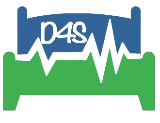The Problem
Symptoms of Sleep Apnea
- Consistent daytime drowsiness
- Loud, chronic snoring
- Waking up gasping or feeling out of breath
- Headaches or sore throat in the morning
- Depression
- Trouble losing weight
- High Blood pressure
- Sexual dysfunction
- Reduced focus/memory
- Type ll Diabetes
- Waking unrefreshed in the morning.
- Nodding off while driving.
- Frequently waking up to use the bathroom.
- Someone advises you that you stop breathing when you sleep.
FAQS
Frequently Asked Questions
There are many: Waking up tired, snorting awake, snoring, stop breathing during sleep, headaches, high blood pressure, increase in blood glucose numbers, anxiety, depression, always need a nap, easy to fall asleep at a red light, tendency to fall asleep watching TV.
There are many, and patients may have one or all of them. Untreated sleep apnea can affect your blood pressure, also affect the ability to treat your blood pressure. It also increases your risk of stroke, diabetes, weight gain, impotence, depression, motor vehicle accidents and more.
While CPAP has been proven to be very effective, some patients find sleeping with a CPAP machine very difficult. Recent data suggests that nearly 50% of patients prescribed CPAP treatment have abandoned using it during the first 12 months. Many patients with underlying medical conditions such as asthma or allergies may not be candidates for CPAP therapy at all.
CPAP requires a mask and pressurized air. Masks may leak, pressure may be too high to tolerate, and you need electricity for it to work. CPAPs are bulky to travel with, tedious to keep clean and, require replacement parts during proper use.
There are multiple surgical techniques such as removal of tonsils and uvula, jaw surgeries, and relocation of the tongue muscle. There are implanted devices to stimulate the tongue muscle to move forward out of the throat. The least invasive is the oral appliance therapy (OAT).
Surgeries all have risks of pain, down time, infections, reactions to anesthesia, and the change is permanent. The implanted devices are placed surgically, there is a smaller group of patients who qualify for this therapy according to their body mass and other health risks. The implanted device also has a poorer success rate compared to the CPAP and oral appliance therapy (OAT). And finally, once implanted you cannot have an MRI in the future.
